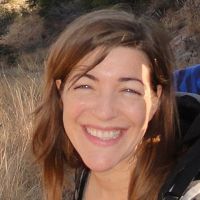Vazquez et al., 2012
Rare earth elements as reactive tracers of biogeochemical weathering in the Jemez River Basin Critical Zone Observatory
Vazquez A., Perdrial J. N., Harpold A. A., Zapata X., Rasmussen C., McIntosh J. C., Schaap M. G., Pelletier J. D., Amistadi M., Chorover J. (2012)
Abstract H53I-1651 presented at 2012 Fall Meeting, AGU, San Francisco, Calif., 3-7 Dec (Poster). Cross-CZO
-
Catalina-Jemez, GRAD STUDENT
-
Catalina-Jemez, Luquillo, Reynolds, INVESTIGATOR
-
Boulder, Catalina-Jemez, INVESTIGATOR
-
Catalina-Jemez, GRAD STUDENT
-
Catalina-Jemez, INVESTIGATOR
-
Catalina-Jemez, INVESTIGATOR
-
Catalina-Jemez, INVESTIGATOR
-
Catalina-Jemez, INVESTIGATOR
Abstract
Rare earth elements (REE) are evaluated as potential tracers to elucidate biogeochemical weathering processes occurring during snowmelt in the Valles Caldera, New Mexico at pedon, hillslope, and catchment scales. We investigated time series of REE patterns in precipitation, soil pore water, ground water, and stream water, and related these data to REE composition of soil, rock and atmospheric dust. REE signatures in stream waters are dynamic, reflecting processes that occur along various hydrologic flowpaths during their transport to the stream, including those of parent rock weathering, water/soil interaction, and atmospheric deposition. REE patterns in stream waters during initial snowmelt reflect a signature similar to snow and soil solutions, consistent with shallow subsurface flow. REE patterns reflective of deep groundwater contribution increases during the recession of the snowmelt event. Rare earth elements and dissolved organic carbon concentrations (DOC) were positively correlated during snowmelt, consistent with REE complexation and mobilization in association with organic ligands during the period of shallow subsurface flow. Most annual (bio)chemical denudation of REE occurs during the snowmelt-derived DOC pulse. The use of Eu-anomalies allows us to elucidate what sources are contributing to the REE budget in Jemez River Basin Critical Zone Observatory (JRB-CZO). Weighted rhyodacite-tuff normalized REE distribution patterns reveal positive Eu-anomalies in the soil matrix, soil solutions, and stream waters and the anomalies were attributed to: 1) weathering of plagioclase feldspars, 2) colloidal transport, and 3) atmospheric deposition. Nd-anomalies in waters are consistent with the prevalence of subsurface flow. Pronounced negative Nd-anomalies observed in water samples collected from subsurface soil horizons and at the outlet of nested catchments within the East Fork Jemez watershed were attributed to preferential Nd adsorption by clays in the subsurface soil horizons. Similar Nd-anomalies were observed in Redondo Meadow stream (proxy for deep groundwater) and South La Jara spring (shallow groundwater).
Citation
Vazquez A., Perdrial J. N., Harpold A. A., Zapata X., Rasmussen C., McIntosh J. C., Schaap M. G., Pelletier J. D., Amistadi M., Chorover J. (2012): Rare earth elements as reactive tracers of biogeochemical weathering in the Jemez River Basin Critical Zone Observatory. Abstract H53I-1651 presented at 2012 Fall Meeting, AGU, San Francisco, Calif., 3-7 Dec (Poster)..
Explore Further








